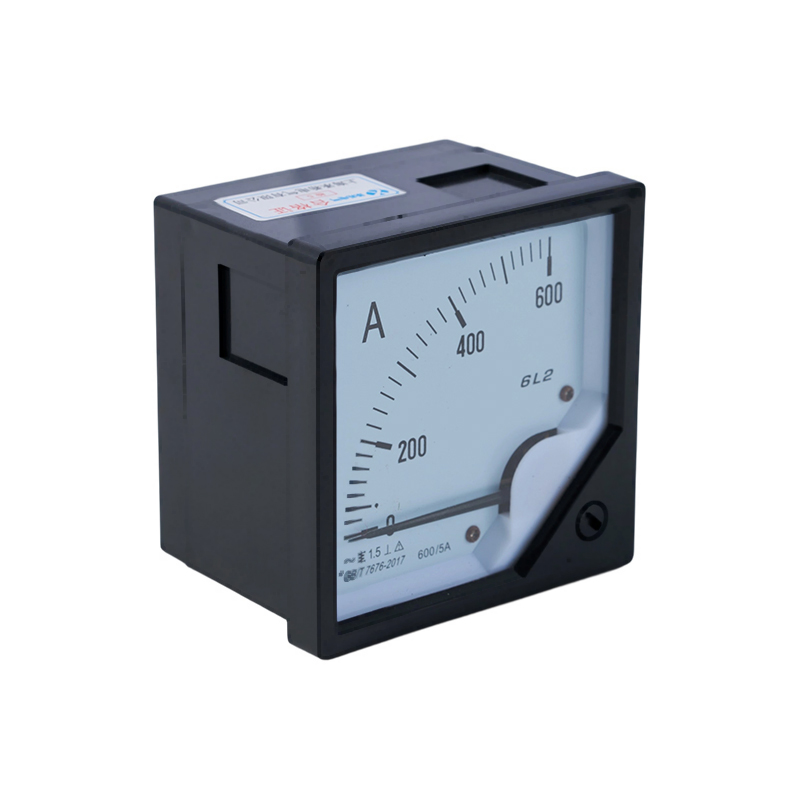What Does an Analog Panel Meter Primarily Measure and How Is It Used Today?
Analog panel meters have long been essential tools for monitoring electrical parameters in various systems. Even with digital technology becoming more common, these classic instruments continue to play a vital role in power management and equipment testing.
An analog panel meter is an instrument designed to measure electrical quantities and display them through a moving pointer on a calibrated scale. These meters are commonly found in control panels, testing stations, and industrial machines. Their purpose is to provide quick, visual readings of a system's performance.
Analog panel meters primarily measure parameters such as:
- Voltage (Voltmeter): Used to determine the potential difference between two points in an electrical circuit.
- Current (Ammeter): Measures the flow of electric current in amperes.
- Frequency: Indicates the number of cycles per second in an alternating current (AC) system.
- Power (Wattmeter): Shows the rate at which electrical energy is consumed.
- Resistance (Ohmmeter): Measures how much a component opposes the flow of current.
These meters work based on the deflection principle, where the current or voltage generates a magnetic field that moves the needle. They are especially valued for their simplicity, durability, and real-time readability—qualities that remain important in environments where digital displays might be less reliable or harder to interpret at a glance.
What Is the Current Usage of Current and Voltage Meters?
While digital meters and automated monitoring systems have advanced, current and voltage meters—both analog and digital—continue to be used in a wide range of applications. Their main function is to ensure that electrical systems operate within safe and efficient parameters.
Common Applications Include:
- Power Distribution Systems: To monitor voltage levels and current loads across electrical panels.
- Manufacturing Equipment: To detect fluctuations that may indicate motor or circuit issues.
- Renewable Energy Systems: Used in solar and wind power installations to monitor performance and load balance.
- Educational and Laboratory Settings: For demonstration, training, and testing of electrical principles.
- Marine and Automotive Systems: To check battery charge, alternator output, and other system functions.
Modern versions of current and voltage meters may feature analog indicators with digital enhancements, such as LED backlighting or dual display capability. This allows for precise measurement while retaining the intuitive readability of analog designs.
Furthermore, portable testing meters are widely used by electricians and engineers for troubleshooting electrical faults. Their versatility makes them suitable for fieldwork, offering immediate insights into system behavior without complex setup.
Current and voltage meters remain indispensable tools for maintaining safe, stable, and efficient electrical systems, bridging the gap between traditional monitoring and modern automation.
What Is the AC Current Value Displayed by an AC Low Current Point Ampere Meter?
An AC Low Current Point Ampere Meter is designed to measure alternating current (AC) in circuits where the current level is relatively small—often in the milliampere (mA) or low ampere (A) range. These meters are crucial in precision electronics, control circuits, and instrumentation where even minor current variations can affect performance.
Key Characteristics:
- Measurement Range: Typically from a few milliamperes up to several amperes, depending on the model.
- Display Type: The analog pointer provides a continuous and real-time view of current changes.
- Accuracy: Designed for fine sensitivity to detect subtle current fluctuations.
- Application Areas: Laboratory testing, automation control panels, medical devices, and instrumentation circuits.
The AC current value displayed on such a meter depends on the actual load or signal in the circuit. For instance:
A control circuit drawing 0.5 A of alternating current will show the pointer deflecting to the corresponding mark on the ampere scale.
In smaller circuits, where current may be 50 mA or 100 mA, the meter's scale is calibrated to offer precise readings without distortion or delay.
These meters are especially useful for diagnosing signal integrity and energy efficiency in AC systems. Engineers rely on them for their immediate feedback and stable readings, which help identify issues such as leakage current, component degradation, or unbalanced loads.
By accurately reflecting the AC current value, these instruments support both troubleshooting and performance optimization. Even with modern digital alternatives, many professionals still prefer analog AC Low Current Point Ampere Meters for their clarity, responsiveness, and simplicity in visual interpretation.



 English
English  Français
Français  中文简体
中文简体  русский
русский  Español
Español  عربى
عربى 














 +86-0577-62265555
+86-0577-62265555 
 281 Wei 15th Road, Yueqing Economic Development Zone, Zhejiang, China
281 Wei 15th Road, Yueqing Economic Development Zone, Zhejiang, China 